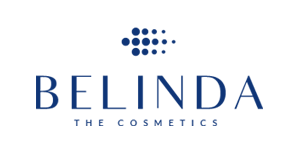Medical Devices Regulation (EU) 2017/745
The Medical Devices Regulation (EU) 2017/745 (MDR) is a pivotal standard for companies involved in the manufacturing, distribution, and certification of medical devices within the European Union. This regulation ensures the safety, efficacy, and compliance of medical devices, aiming to protect public health while fostering innovation in the industry. In this article, we’ll explore the essentials of MDR, its implications for businesses, and the certification process for achieving compliance.
What is Medical Devices Regulation (EU) 2017/745?
The Medical Devices Regulation (EU) 2017/745 replaced the previous Medical Device Directive (93/42/EEC) and Active Implantable Medical Device Directive (90/385/EEC). It was enacted to address advancements in medical technology and enhance the regulatory framework’s robustness. The regulation emphasizes stricter controls on medical devices throughout their lifecycle, from design to post-market surveillance.
Why is MDR Important?
Enhanced Patient Safety: By establishing rigorous safety and performance requirements, MDR ensures that medical devices meet high-quality standards.
Transparency: Improved traceability through Unique Device Identification (UDI) allows for better monitoring of devices in the market.
Market Access: MDR compliance is mandatory for companies aiming to distribute medical devices within the European Economic Area (EEA).

Key Principles of Medical Devices Regulation (EU) 2017/745
Understanding the core principles of MDR is crucial for businesses aiming to achieve compliance:
1. Classification of Medical Devices
Under MDR, devices are classified into four risk categories: Class I, Class IIa, Class IIb, and Class III. The classification determines the level of scrutiny during the certification process.
2. General Safety and Performance Requirements (GSPR)
Manufacturers must demonstrate compliance with GSPR, covering safety, performance, and risk management throughout the device’s lifecycle.
3. Clinical Evaluation and Investigation
A thorough clinical evaluation is mandatory to prove the device’s safety and efficacy. For higher-risk devices, clinical investigations may be required.
4. Post-Market Surveillance
MDR mandates continuous monitoring of devices post-market to identify and address any potential risks.
5. Unique Device Identification (UDI)
The UDI system enhances traceability, ensuring that devices can be effectively monitored and recalled if necessary.
Learn More About Medical Devices Regulation (EU) 2017/745 Requirements ...
Certification Process for MDR Compliance
Achieving compliance with the Medical Devices Regulation (EU) 2017/745 involves several steps:
1. Pre-Certification Preparation
Gap Analysis: Identify gaps between your current processes and MDR requirements.
Risk Management: Implement risk management strategies according to ISO 14971.
2. Classification of Devices
Determine the appropriate classification for your device based on its intended use and risk factors.
3. Technical Documentation
Prepare comprehensive technical documentation that includes:
Device description and specifications
GSPR checklist
Risk analysis and management report
Clinical evaluation report
Labeling and UDI information
4. Quality Management System (QMS)
Implement a QMS aligned with ISO 13485 to ensure consistent quality in device manufacturing and processes.
5. Notified Body Audit
Collaborate with a Notified Body authorized to assess MDR compliance. The audit process includes:
Review of technical documentation
On-site inspections
Verification of QMS implementation
6. Issuance of CE Marking
Upon successful audit and approval, the Notified Body issues a CE Certificate, allowing the device to be marketed in the EEA.
Learn More About Medical Devices Regulation (EU) 2017/745 Technical Documentation ...

Industries Benefiting from MDR Compliance
The Medical Devices Regulation (EU) 2017/745 impacts various sectors, including:
Medical Equipment Manufacturers: Ensuring compliance allows access to the lucrative EU market.
Healthcare Providers: Hospitals and clinics benefit from safer and more reliable devices.
Diagnostic Device Companies: MDR guarantees the accuracy and reliability of diagnostic tools.
Challenges and Solutions in Achieving MDR Compliance
Challenges
Complex Documentation: Preparing extensive technical files can be overwhelming.
Strict Timelines: Adhering to MDR’s deadlines requires efficient planning.
Cost Implications: Compliance involves significant financial investment.
Solutions
Expert Guidance: Partnering with experienced consultants simplifies the compliance process.
Advanced Tools: Utilize software solutions for documentation and traceability.
Training Programs: Equip your team with knowledge about MDR requirements.
Benefits of CE Certification under MDR
Market Access: Complying with MDR opens doors to the EU’s vast healthcare market.
Brand Reputation: Certification demonstrates your commitment to quality and safety.
Competitive Advantage: Stand out in the market by meeting stringent regulatory standards.
Learn More About Medical Devices Regulation (EU) 2017/745 Standards ...

Call to Action: Get Certified Today!
Navigating the complexities of the Medical Devices Regulation (EU) 2017/745 can be daunting, but achieving compliance is essential for long-term success in the medical device industry. Our team of experts is here to guide you through every step of the certification process.
Contact us today to start your journey toward MDR compliance and secure your CE Certificate, ensuring your medical devices meet the highest standards of safety and performance.
- Get Your Legal Advice
- All Experts Lawyers
- All Experts Lawyers
- Great Discounted Rates
- Fighting for The Average Joe
- Get The Money You Deserve
- All Experts Lawyers
- Justice For All


Point of View
Our Vision
A lawyer or attorney is a person who practices law, as an advocate, attorney, attorney at law, barrister, barrister-at-law, bar-at-law, civil law notary, counsel, counselor, counselor, counselor at law, solicitor, chartered legal executive, or public servant preparing, interpreting and applying law, but not as a paralegal or charter executive secretary. Working as a lawyer involves the practical application of abstract legal theories and knowledge to solve specific individualized problems, or to advance the interests of those who hire lawyers to perform legal services.

